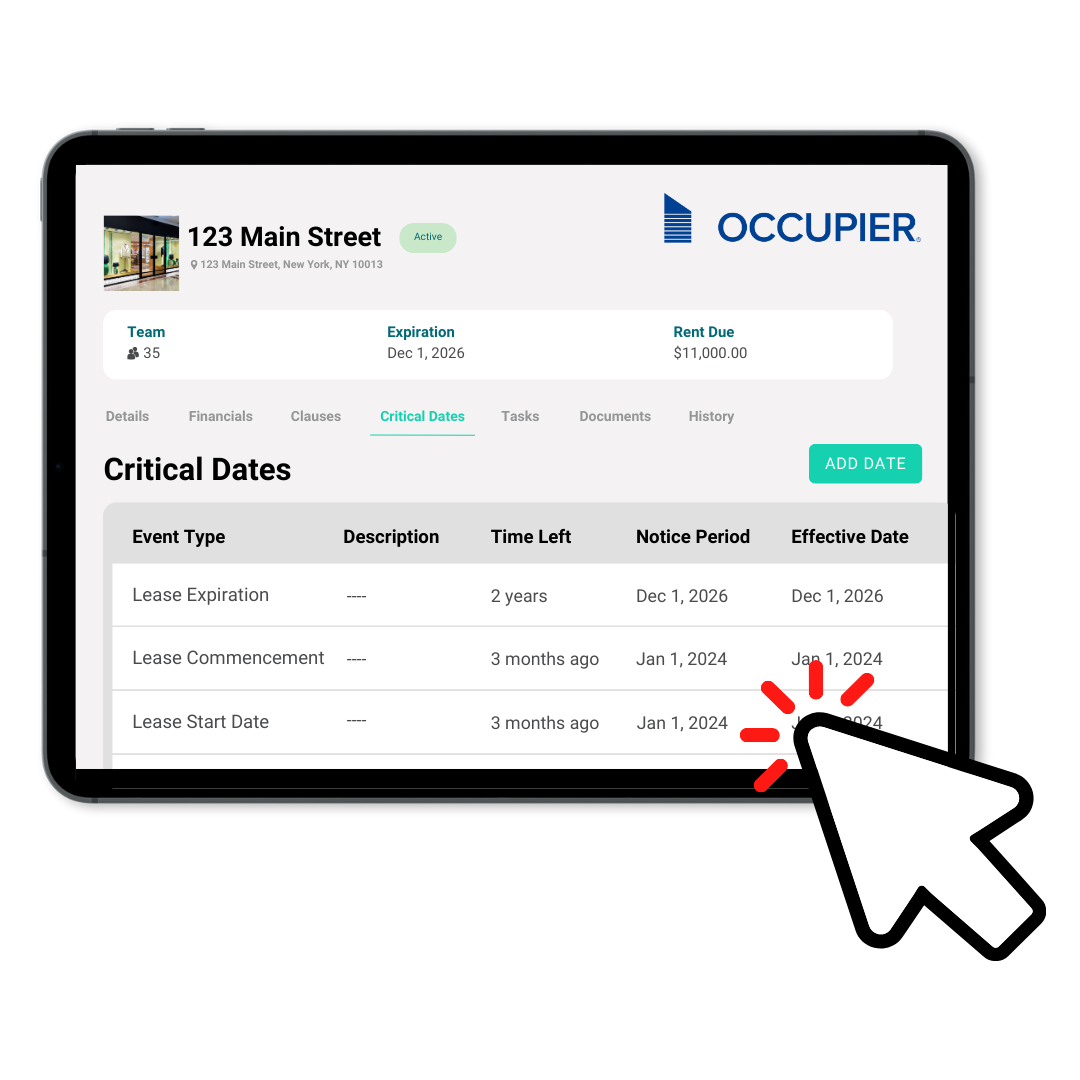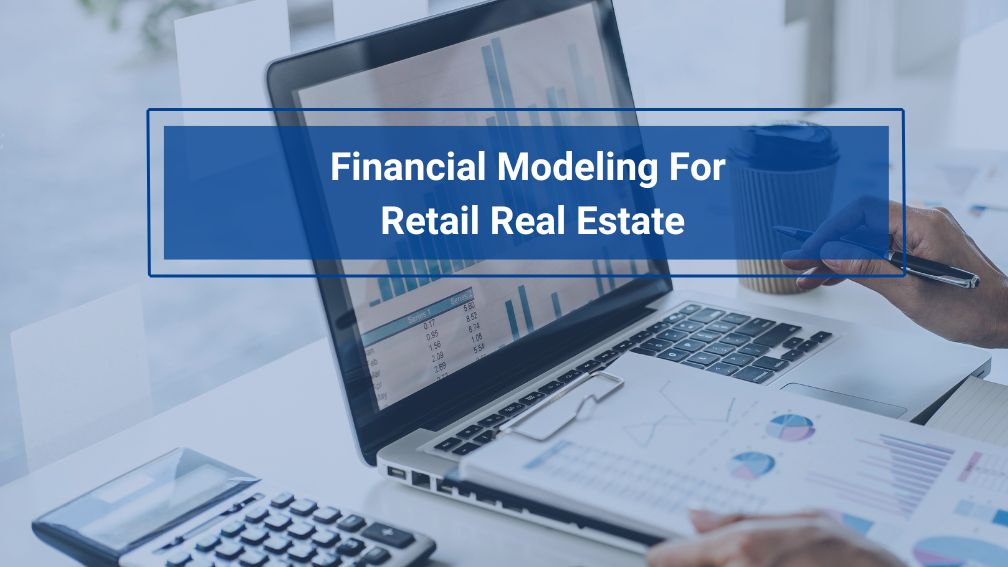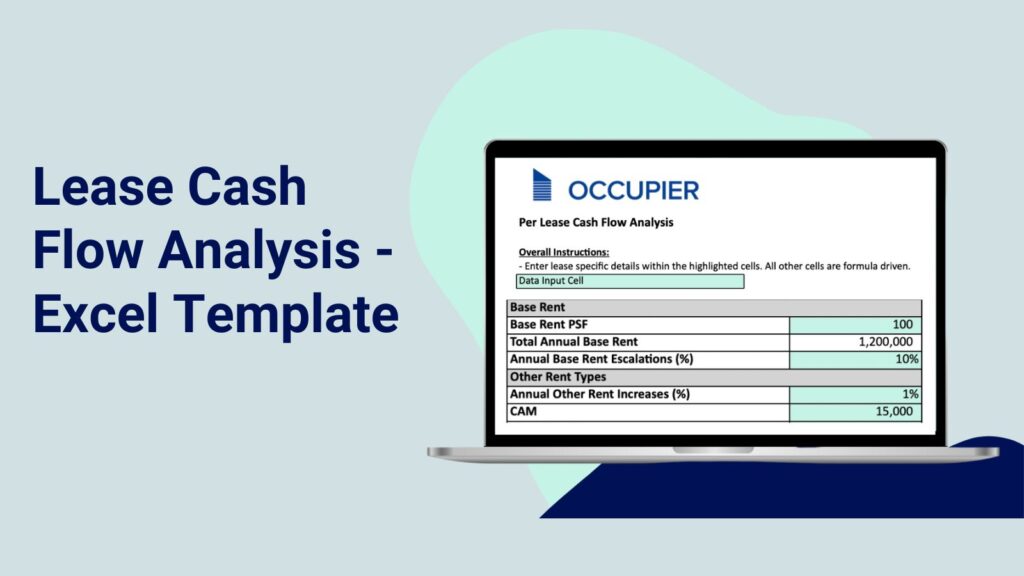Financial Modeling for Retail Real Estate
Last Updated on August 30, 2024 by Morgan Beard
Accurate financial modeling is the cornerstone of successful retail real estate decision-making. As a commercial retailer, restauranteur or franchisee, every choice you make can significantly impact your company’s bottom line. Financial modeling in retail real estate goes beyond simple profit & loss calculations; it’s about creating a comprehensive picture of potential investments, risks, and returns.
Traditionally, financial modeling has been a time-consuming and often error-prone process. However, with the support of commercial real estate software, the landscape is rapidly changing. This article will explore the key components of financial modeling in retail real estate, highlight the limitations of traditional methods, and showcase how modern software solutions are revolutionizing the field.
Key Components of Financial Modeling in Retail Real Estate
Cash Flow Analysis
At the heart of any retail real estate financial model is cash flow analysis. This involves projecting all incoming and outgoing cash flows associated with a property over a specified period. For you, as a commercial tenant, this means carefully estimating rental income, operating expenses, and potential revenue from subleasing or ancillary services.
A robust cash flow analysis helps you determine the net operating income (NOI) of a property, which is crucial for assessing its overall financial performance. It also allows you to calculate important metrics such as the internal rate of return (IRR) and net present value (NPV), which are essential for comparing different investment opportunities.
Lease Rent to Revenue Ratio
The lease rent to revenue ratio is a critical metric in retail real estate financial modeling. It represents the proportion of your sales that goes towards paying rent. As a commercial tenant, maintaining a healthy ratio is vital for ensuring profitability and long-term sustainability.
Typically, this ratio ranges from 5% to 15%, depending on the type of retail business and location. A lower ratio indicates that rent costs are well-managed relative to revenue, while a higher ratio might signal potential financial stress. Regularly monitoring and forecasting this ratio helps you negotiate better lease terms and make informed decisions about store locations.
Capital Expenditure Planning
Capital expenditure (CapEx) planning is another crucial component of financial modeling in retail real estate. As a commercial tenant, you need to account for costs associated with store fit-outs, renovations, and major equipment purchases. These investments can significantly impact your cash flow and overall financial performance.
Effective CapEx planning involves forecasting future capital needs, prioritizing projects, and assessing their potential return on investment. By incorporating CapEx planning into your financial models, you can better manage your resources and ensure that your retail spaces remain competitive and appealing to customers.
Operating Expense Planning
Operating expense (OpEx) planning is a critical component of financial modeling in retail real estate, especially for commercial tenants. As a Head of Real Estate, understanding and accurately forecasting these expenses is crucial for maintaining profitability and making informed leasing decisions.
Operating expenses in retail real estate typically include:
- Common Area Maintenance (CAM) charges
- Property taxes
- Insurance
- Utilities
- Marketing and advertising fees for the property
- Property management fees
Even small variations in operating expenses can have a significant impact on your bottom line. We dive into various operating expenses in our lease payables blog. Meticulous OpEx planning is not just a financial exercise—it’s a strategic imperative that can give you a competitive edge in the market.
Scenario Planning and Sensitivity Analysis
In the unpredictable world of retail, scenario planning and sensitivity analysis are invaluable tools. These techniques allow you to model various “what-if” scenarios and assess how changes in key variables might affect your financial outcomes.
For instance, you might model scenarios such as:
- A 10% decrease in foot traffic
- A 20% increase in online sales
- A change in lease terms or rent structure
- The impact of a major competitor opening nearby
By running these scenarios, you can prepare contingency plans and make more informed decisions about your retail real estate strategy.
Traditional Financial Modeling
Manual Data Entry and Human Error
Traditional financial modeling often relies heavily on manual data entry into spreadsheets. While this method can be effective for simple calculations, it becomes increasingly prone to errors as the complexity of the model grows. A single misplaced decimal point or incorrect formula can lead to significant discrepancies in your financial projections.
For you, as a senior real estate executive, these errors can lead to misinformed decisions that could cost your company millions of dollars. The risk of human error in manual data entry is a constant concern that requires vigilant oversight and time-consuming double-checks.
Limited Scalability
As your retail portfolio grows, so does the complexity of your financial models. Traditional spreadsheet-based models often struggle to keep up with this increased complexity. Adding new properties, updating multiple scenarios, or incorporating additional variables can quickly become unwieldy.
This limited scalability can hinder your ability to make quick, data-driven decisions in a fast-paced retail environment. It may also prevent you from taking advantage of new opportunities due to the time and effort required to update and run your financial models.
Inconsistent Reporting
Another significant drawback of traditional financial modeling is the potential for inconsistent reporting. When multiple team members are working on different aspects of the model or creating reports for various stakeholders, maintaining consistency can be challenging.
Inconsistencies in reporting can lead to confusion, misinterpretation of data, and ultimately, poor decision-making. As a leader in your organization, you need to ensure that all stakeholders are working with the same, accurate information to align strategies and objectives effectively.
How Commercial Real Estate Software Transforms Financial Modeling
Data Integration and Centralization
Modern commercial real estate software addresses many of the limitations of traditional financial modeling by offering seamless data integration and centralization. These platforms can automatically pull data from various sources, including property management systems, market databases, and even IoT devices in your retail spaces.
For you, this means access to a single source of truth for all your real estate data. No more juggling multiple spreadsheets or reconciling conflicting information. With all your data in one place, you can make decisions based on a comprehensive and up-to-date view of your retail portfolio.
Automated Calculations and Real-Time Updates
One of the most significant advantages of commercial real estate software is its ability to automate complex calculations and provide real-time updates. As market conditions change or new data becomes available, your financial models can automatically adjust, giving you the most current insights at any given moment.
This automation not only saves time but also dramatically reduces the risk of human error. You can trust that your financial projections are based on accurate, up-to-date information, allowing you to make decisions with greater confidence.
Customizable Reports and Dashboards
Commercial real estate software often comes with powerful reporting and dashboard capabilities. These tools allow you to create customized reports tailored to the specific needs of different stakeholders in your organization.
Whether you need a high-level overview for a board meeting or a detailed analysis for your operations team, you can generate the right report with just a few clicks. Many platforms also offer interactive dashboards that allow you to drill down into specific data points, giving you the flexibility to explore different aspects of your financial models in real-time.
By leveraging these advanced features, you can streamline your decision-making process, improve communication across your organization, and ultimately drive better outcomes for your retail real estate portfolio.
While traditional financial modeling methods have served the real estate industry for many years, the complexity and pace of today’s market demand more sophisticated tools. By embracing commercial real estate software, you can enhance the accuracy, efficiency, and scalability of your financial modeling efforts. This not only saves time and reduces errors but also provides you with deeper insights to make informed, data-driven decisions that will shape the future of your retail real estate strategy.

Product Tour
Take a self-guided tour and see how the fastest-growing commercial tenants leverage Occupier for lease management & lease accounting.

